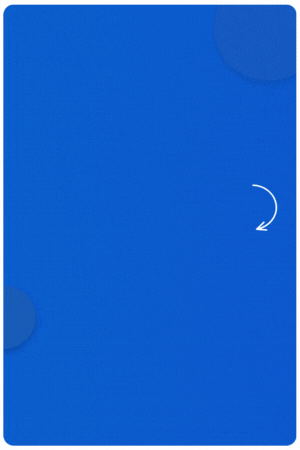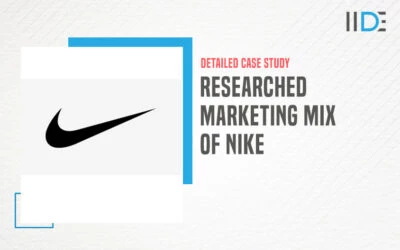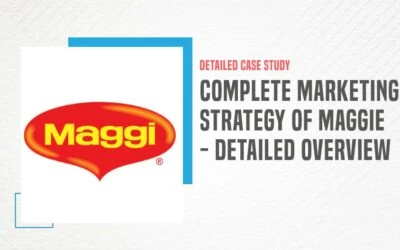Everyone has had these crispy wafers covered in chocolate known as KitKat at some point in their lives. Even if you’ve never tried them, you’ve probably seen the commercial “Have a break, have a KitKat.”
KitKat is the most popular chocolate bar from the United Kingdom. It has over 350 gourmet flavours, the majority of which are produced in Japan. These flavours revitalize the brand’s offerings and foster strong customer relationships. But, is it the slogan and the variety of flavors that make the brand so appealing?
To better understand the reasons behind KitKat’s continuous growth, let’s go through the SWOT analysis of KitKat.
A SWOT analysis evaluates a company’s strengths, weaknesses, opportunities, and threats. Its primary goal is to help organizations gain a comprehensive understanding of all the factors that influence business decisions.
So, in this case study, we will learn about the detailed SWOT analysis of KitKat. Let’s get started.
About KitKat

KitKat is a perfect balance of chocolate and wafer that was first introduced in the United Kingdom in 1935 as ‘Chocolate Crisp.’ In 1937, the KitKat brand name and logo were first seen on a package.
The standard bars are composed of two or four pieces, each of which has three layers of wafer separated and covered by an outer layer of chocolate. Each finger can be removed from the bar individually. Kit Kat comes in a variety of flavors, including milk, white, and dark chocolate.
Today, the iconic brand can be found in over 80 countries.
The famous Have a break, have a KitKat slogan was first used in 1958 and has been used continuously since then.
KitKat Chocolatory is the ultimate KitKat Break Experience, with products that are personalized and customizable, as well as digitally shareable.
KitKat is the world’s first confectionery brand made entirely of sustainably sourced cocoa.
Now that we’ve covered the company’s basics, let’s look at KitKat’s S.W.O.T analysis in the section below.
SWOT analysis of KitKat

A SWOT analysis is a strategy for identifying a company’s strengths, weaknesses, opportunities, and threats.
It’s an excellent tool for determining where the company excels and where it falls short, devising countermeasures, and determining how the company can grow. So here is KitKat’s SWOT analysis:
Strengths of KitKat
Strengths are the best-working features and practices that work for a brand. Let’s see some of KitKats.
Unique offering: KitKat’s number one strength is its one-of-a-kind offering – a chocolate-covered wafer that people adore for its flavor. Furthermore, by making this change, KitKat has distinguished itself from Dairy Milk and other chocolate bars on the market.
Quality control: There are hardly any complaints about the quality of KitKat Chocolates. The quality management is excellent, and the same standard is applied throughout the world, causing people to fall in love with the taste and consistency of KitKat chocolate.
A unique method of opening the chocolate: There have been campaigns dedicated to the sweet sound that a KitKat chocolate wrapper makes when opened. We doubt any chocolate has ever accomplished this feat. This resulted in excellent brand recall in the minds of the consumers.
Excellent tagline: Have a break, have a KitKat is one of the most well-known brand slogans ever, and KitKat has owned it for many years. KitKat even had a website where you could relax by swatting mosquitoes. Alternatively, it has images on its website of people simply relaxing. The brand’s marketing strategy revolves around the tagline – that you should take regular breaks during the break, and you can have a KitKat during such times.
Massive distribution: In the FMCG market, you cannot survive without massive distribution. KitKat is manufactured in 16 countries and distributed in over 100 countries worldwide. Because it comes from Nestle, which also owns Maggi and Nescafe, the distribution is aided by the sales channel that is already in place for the other brands.
Weaknesses of KitKat
Weaknesses are aspects of a business or brand that should be improved. So let’s check out KitKat’s major weaknesses:
Counterfeit Products: One issue with KitKat is that there are many duplicate versions of Kitkat available in developing economies. Regional players, on the other hand, come up with the wafer biscuit concept. KitKat must fight against such duplication with vigour.
Packaging: KitKat’s packaging has remained unchanged for approximately sixty years. The red packaging, merchandising, and sales promotion of the chocolate have only undergone minor changes. It is critical to come up with innovative ideas and go for what is new and trendy in order to keep customers interested at all times.
Breakage: Another problem that occurs during the packaging process is breakage. Because the biscuit is literally a wafer, it is easily broken, and the customer frequently receives a broken piece of wafer chocolate. The consumer may become frustrated as a result.
Corporate Social Responsibility: KitKat has received a lot of criticism for its poor implementation of corporate social responsibility programs. It did, however, begin making efforts by transitioning to reusable packaging by 2025.
Opportunities for KitKat
Opportunities are potential areas for a company to focus on in order to improve results, increase sales, and, ultimately, profit. So let’s see what type of opportunities can KitKat work towards to create positive results.
Expansion: More expansion for any FMCG company means more revenue, which means more profit. The same is true for KitKat. The greater its expansion in developing economies, the better for the brand.
Increasing offerings: KitKat can introduce new variants in which the chocolate contribution to the wafer chocolate combination is increased, resulting in a richer taste, and further offer more such distinguished desserts.
Internet and Social Media: As digital technology advances, consumers will be able to become more connected to the company and the products that will be introduced on the company’s social media accounts. This will also provide a great and cost-effective opportunity for promotions and CRM management.
Healthy Snacks: KitKat can introduce healthier options such as low-calorie chocolate bars as the world moves towards a more health-conscious society.
Threats to KitKat
Threats are environmental factors that can stifle a company’s growth. Following are some of Kitkat’s threats:
Health Consciousness: People are replacing chocolates with other healthier snacks as they become more health conscious, which will gradually affect the brand’s revenue.
Supplier Bargaining Power and Inflation: Due to rising raw material costs such as dairy, packaging, and fuel, KitKat’s low prices are nearly impossible to maintain. As a result, price-conscious customers will seek out competitors with lower prices.
Competition: KitKat is competing in two ways: directly and indirectly. Dairy Milk is a significant direct competitor to KitKat. Dairy milk is the undisputed leader in the chocolate market. As a result, KitKat always comes in second place, and the gap between dairy milk and KitKat is also enormous.
Now that we’ve carefully analyzed the SWOT Analysis of KitKat, let’s conclude the case study in the section below.
Conclusion
To summarize, KitKat has been around for more than a century and is a powerful brand that deserves its own discussion and attention. KitKat’s popularity has been sustained over time despite rapidly changing consumer attributes, tastes, and consumption patterns due to continuous reinforcement of the brand message through advertising and promotions.
I hope you were able to gain some insight into how KitKat was able to succeed in this dynamic industry. The SWOT analysis performed by the company has aided in the formulation of key recommendations, such as establishing a new vision and strategy, as well as adhering to current performance indicators.
Did you find it informative? Do you want to learn more? Check out our knowledge portal for similar case studies. Furthermore, if you’re interested in Digital Marketing, IIDE’s Founder and CEO- Karan Shah’s Free Masterclass is an excellent place to start.
Please share your thoughts on this case study in the comments section below. Thank you for taking the time to read this, and if you liked it, please share it with your friends and family.







0 Comments